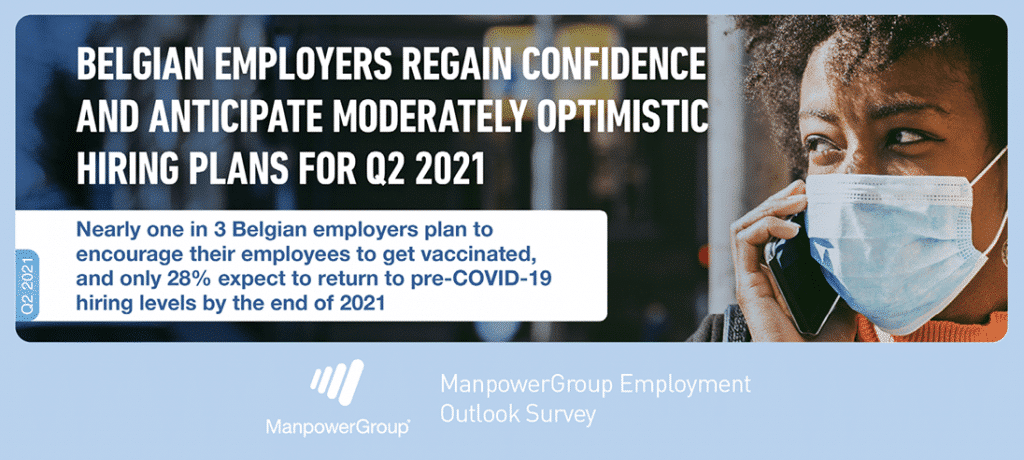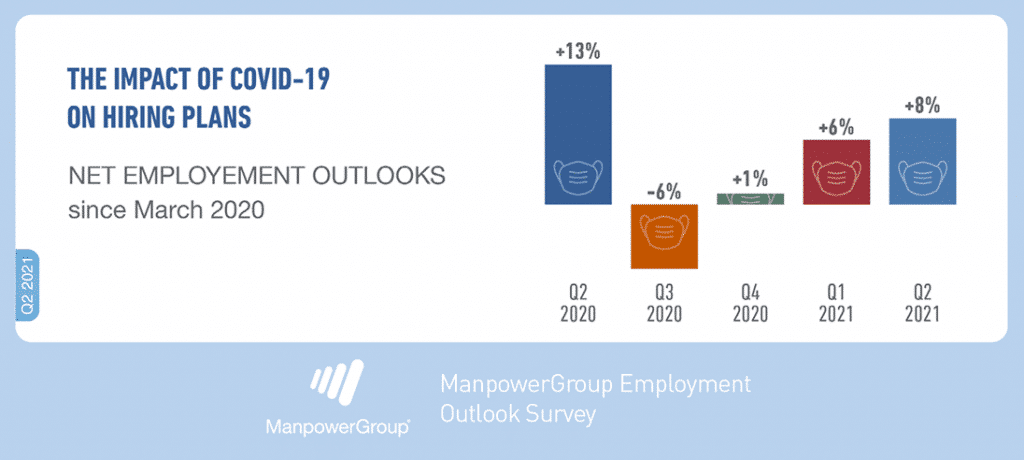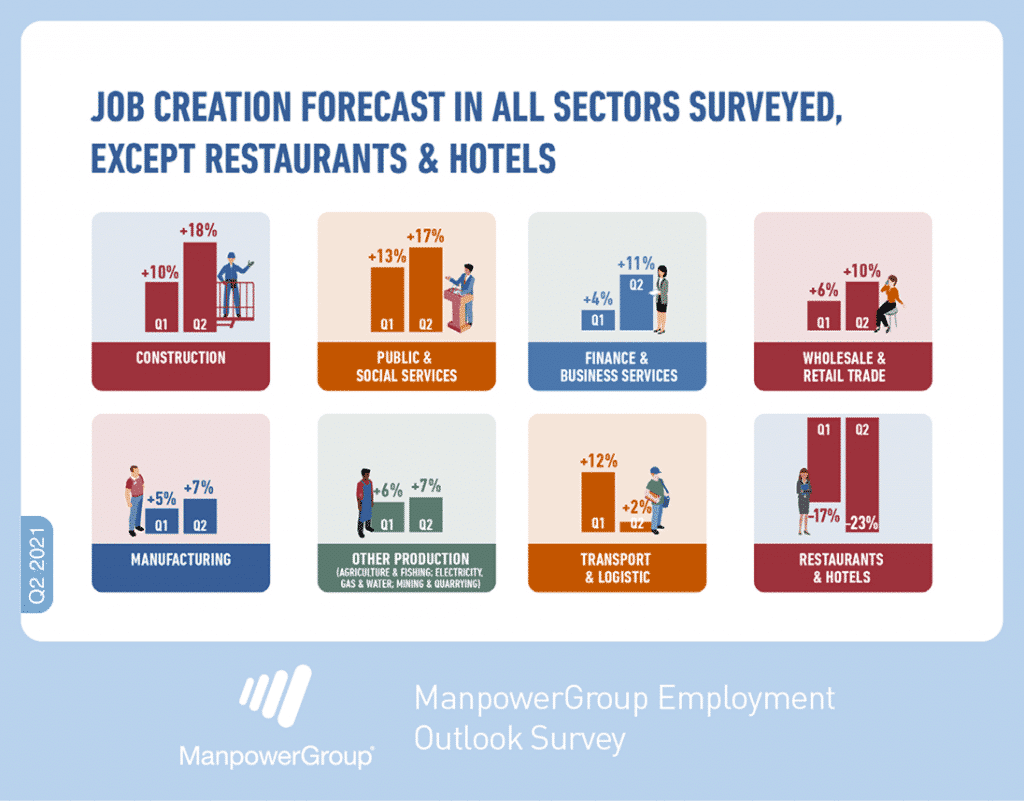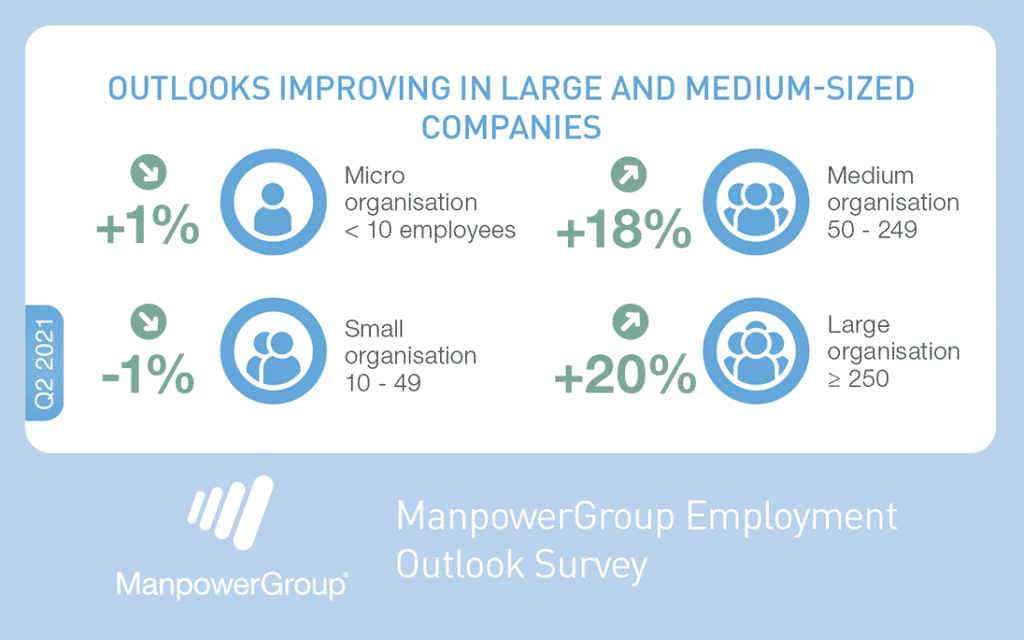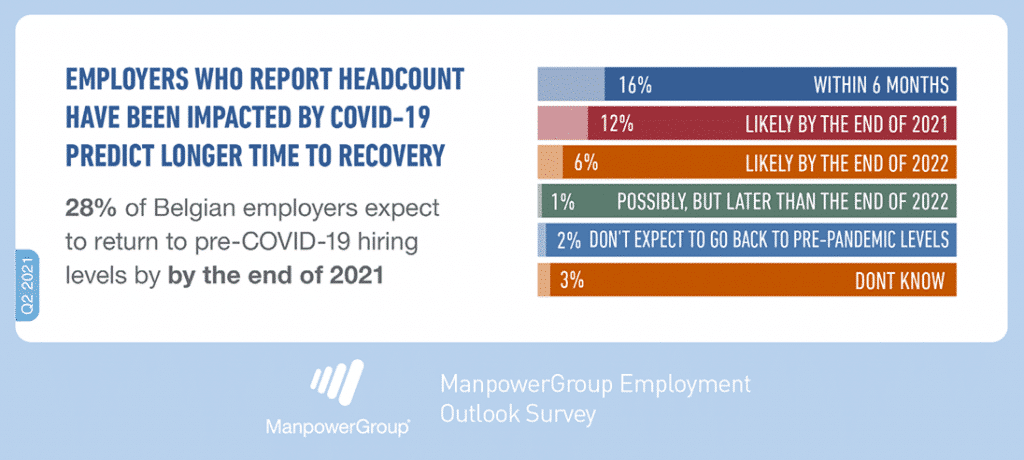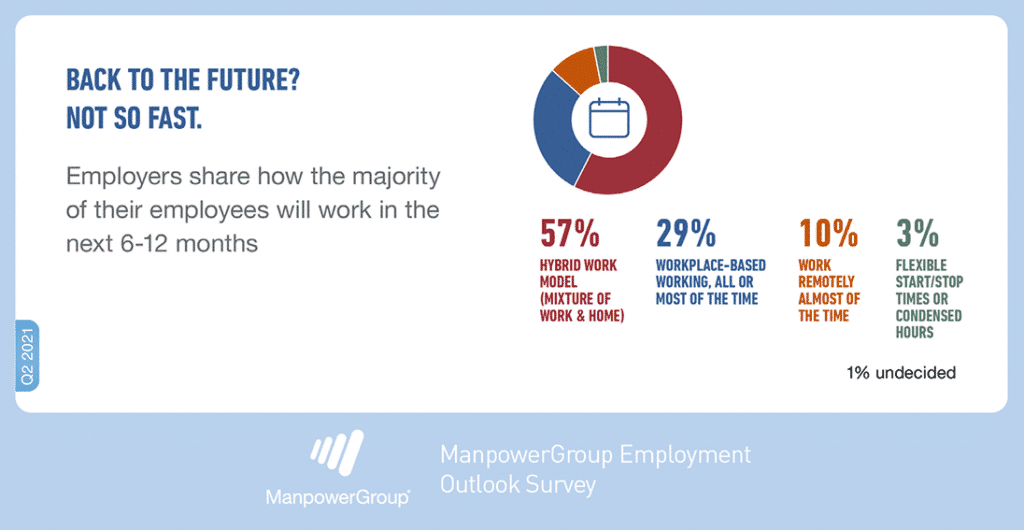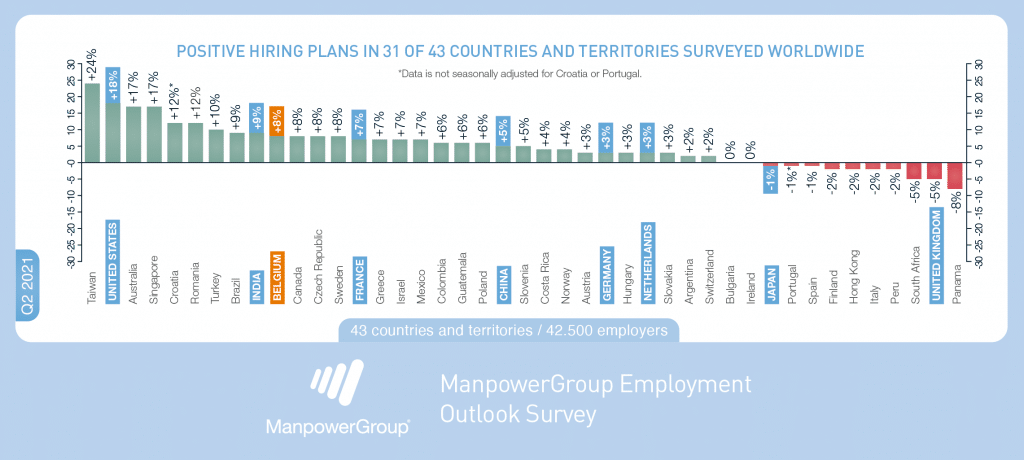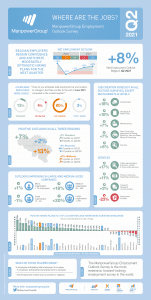Belgian employers regain confidence and anticipate moderately optimistic hiring plans for the next quarter

The Talent Game : Can Gaming Tell You Who to Hire? #Game2Work
25 March 2021
Belgium 34th (out of 76) on the ManpowerGroup Total Workforce Index™
21 April 2021
According to the ManpowerGroup Employment Survey released today, the labor market situation is expected to continue to improve in Q2 2021. In Belgium, 13% of the 474 employers surveyed at the end of January plan to increase their workforce by the end of June 2021, while 4% plan to reduce staff. 80% of employers surveyed anticipate no change. After seasonal adjustment, the Net Employment Outlook – the difference between the percentage of employers expecting to hire staff and the percentage of those planning to reduce staff – stands at a positive value of +8%. Hiring plans improve by 2 points when compared with the previous quarter but decline by 5 points in comparison with the same period last year2.
“Mirroring the latest figures from the temporary work sector, the results of our employment survey indicate that employer confidence is strengthening and there’s likely to be an increase in recruitment activity compared to the previous quarter » explains Philippe Lacroix, Managing Director of ManpowerGroup BeLux. “However, 2021 is already shaping up to be a year of transition with only 28% of employers surveyed expecting their recruitment activity return to pre-health crisis levels by the end of 2021. The strength of the recovery will depend heavily on the success of the vaccination campaign and a majority of employers surveyed will rely on the goodwill of their employees to participate.”
Positive Outlooks in all three regions
Outlooks are positive in all 3 regions: optimistic in Wallonia (+13%), moderate in Flanders (+7%) and cautious in Brussels (+2%).
Hiring plans strengthen in Wallonia and Flanders when compared with the previous quarter, improving by 4 and 2 percentage points, respectively. Meanwhile, the Brussels Outlook remains unchanged.
Job creation forecast in seven of the eight sectors surveyed
Employment Outlooks are positive in in seven of eight industry sectors surveyed. With one employer in four planning to increase its workforce by the end of June, employers in the Construction sector are showing the greatest optimistim (+18%). Steady hiring activity is also expected in the Public services, health, education and social services sector (+17%), Finance, insurance, real estate and business services (+11%) and the Wholesale and retail trade sector (+10%). Employers also report encouraging forecasts in the Manufacturing industry (+7%) and in the ‘Other production’ sector – Agriculture & Fishing; Electricity, Gas & Water; Mining & Quarrying industries – (also +7%). Employers in the Transport and Logistics sector (+2%) are cautious while employers in the the Restaurant and Hotels sector (-23%) are the only ones to report negative hiring intentions, and that is for the fourth consecutive quarter. This is the weakest Net Employment Outlook ever recorded in this sector since the creation of the survey in Belgium in 2003.
Hiring sentiment strengthens in six of the eight industry sectors when compared with the previous quarter while it weakens in five.
Forecasts improving in large and medium-sized companies
According to the ManpowerGroup survey, the Net Employment Outlook continues to progress for the third consecutive quarter in large companies (≥ 250 workers) and in medium-sized companies (50-249 workers), reaching +20% and +18% respectively. Conversely, employers in small businesses (10-49 workers) and micro-enterprises (<10 workers) expect staffing levels to remain at a standstill, the Net Employment Outlook stands at -1% and + 1% respectively.
Facilitate the return to normal
While the vaccination campaign will intensify in the coming weeks, employers will still have to be patient before they can hope for a return to normal. Only 28% of employers surveyed in Belgium expect to return to pre-COVID-19 hiring levels by the end of 2021, 18% of them share that view in Brussels, 30% in Flanders and 31% in Wallonia.
By then, 57% of employers will try to encourage a hybrid work model with a good mix of remote working and workplace-based working. 29% hope to be able to bring their staff back to their workplace most of the time, while 10% prefer their staff work remotely all/most of the time.
On vaccinations, 42% of the employers surveyed have no plans to introduce a fixed policy on employee vaccination – and legally, an employer cannot make vaccination mandatory(3) – while 31% plan to encourage vaccination by highlighting the benefits.
“While teleworking has shown its impact on the mental and physical health of workers – particularly in terms of the lack of social contact – companies will have to listen to their employees’ individual expectations and organize themselves to meet their needs whilst complying with the health directives that are in place. Communication related to the vaccination campaign should also be a central concern” adds Philippe Lacroix.
Hiring plans strengthen in 16 EMEA countries when compared with the previous quarter
In the Europe, Middle East & Africa (EMEA) region, workforce gains – however cautious – are expected over the next three months for 18 of the 26 countries surveyed, while employers in six countries expect to trim payrolls and flat hiring prospects are reported for two. Hiring plans strengthen in 16 EMEA countries when compared with the previous quarter but weaken in 20 in a comparison with the same period last year.
In the upcoming quarter, the strongest labor markets are anticipated by employers in Croatia (+12%), Romania (+12%), and Turkey, (+10%). Employers expect a rebound in hiring activity in France (+7%, increase of 6 points in quarterly comparison), as well as in Belgium (+ 8%), the Czech Republic (+ 8%) and in Sweden (+ 8%). German employers report increasingly cautious hiring expectations (+3%, down by 5 points, Outlooks weaken in all seven German industry sectors when compared with both the first quarter of 2021 and last year at this time), the Netherlands (+3%) and Switzerland (+ 2%). Hiring intentions remain slightly negative in Spain (-1%) and Italy (-2%), while employers in the UK (-5%) report a negative Net Employment Outlook for the fourth consecutive quarter and the weakest Outlook of all the countries surveyed in Europe.
At global level employment prospects are positive in 31 of the 43 countries and territories surveyed, particularly in the United States (+18%), Brazil (+9%), India (+9%) and China (+5%), while they are negative in Japan (-1%), Hong Kong (-2%) and Panama (- 8%, the weakest Net Employment Outlook of all 43 countries and territories surveyed).
The next survey will be released on 8th June 2021 and will report hiring expectations for Q3 2021.
Presentation of the Survey
The ManpowerGroup Employment Outlook Survey for the second quarter of 2021 was conducted between 6th and 26th January 2021 by interviewing a representative sample of employers from over 42,500 private companies and public organizations in 43 countries and territories around the world (including 474 in Belgium). The aim of the survey is to measure employers’ intentions to increase or decrease the number of employees in their workforce during the next quarter. All survey participants were asked the same question: “How do you anticipate total employment at your location to change in the three months to the end of June 2021 as compared to the current quarter?” It is the only forward-looking survey of its kind, unparalleled in its size, scope, longevity and area of focus. The Survey has been running for more than five decades and is one of the most trusted surveys of employment activity in the world. It is considered a highly respected economic indicator.
Note that in Quarter 2 of 2008, the survey adopted the TRAMO-SEATS model for seasonal adjustment of data. As a result, you may notice some seasonally adjusted data points change slightly from previous reports. This model is recommended by the Eurostat department of the European Union and the European Central Bank and is widely used internationally.
Report ManpowerGroup Employment Outlook Survey Q2/2021
Infographic ManpowerGroup Employment Outlook Survey Q2/2021
Infographic Impact Covid-19 on hiring intentions



